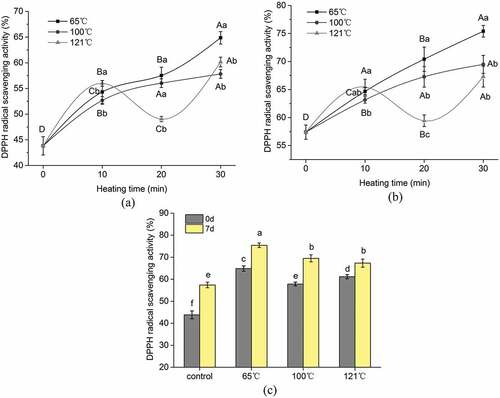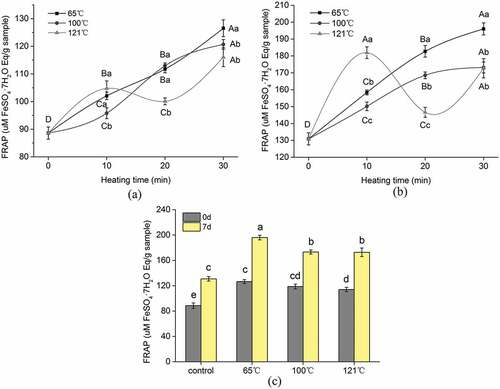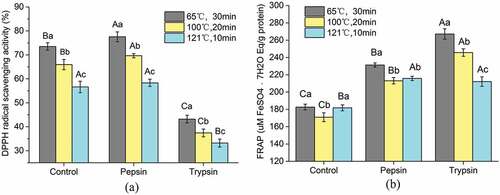Figures & data
Figure 1. The DPPH radical scavenging of the extracted peptides from duck breast. (a) Effect of cooking temperature and time on DPPH radical scavenging activity of peptides from duck meat at 0 days postmortem. (b) Effect of cooking temperature and time on DPPH radical scavenging activity of peptides from duck meat at 7 days postmortem. (c) Effect of postmortem aging on DPPH radical scavenging activity of peptides from duck meat at different cooking temperatures. The value of each datapoint is presented as mean ± SE (n = 3). The data with different highercase letters are significantly different at the same cooking temperature; data with different lowercase letters are significantly different at the same cooking time (P < .05)

Figure 2. The ferric reducing antioxidant power (FRAP) of the extracted peptides from duck breast. (a) Effect of cooking temperature and time on FRAP of peptides from duck meat at 0 days postmortem. (b) Effect of cooking temperature and time on FRAP of peptides from duck meat at 7 days postmortem. (c) Effect of postmortem aging on FRAP of peptides from duck meat at different cooking temperatures. The value of each datapoint is presented as mean ± SE (n = 3). The data with different highercase letters are significantly different at the same cooking temperature; data with different lowercase letters are significantly different at the same cooking time (P < .05)

Figure 3. Effect of pepsin–trypsin digestion on antioxidant activity DPPH radical scavenging of peptides from aged duck meat after cooking. (a) DPPH radical scavenging activity of peptides. (b) FRAP of peptides. The value of each datapoint is presented as mean ± SE (n = 3). The data with different highercase letters are significantly different during pepsin–trypsin digestion; data with different lowercase letters are significantly different between different cooking methods (P < .05)

